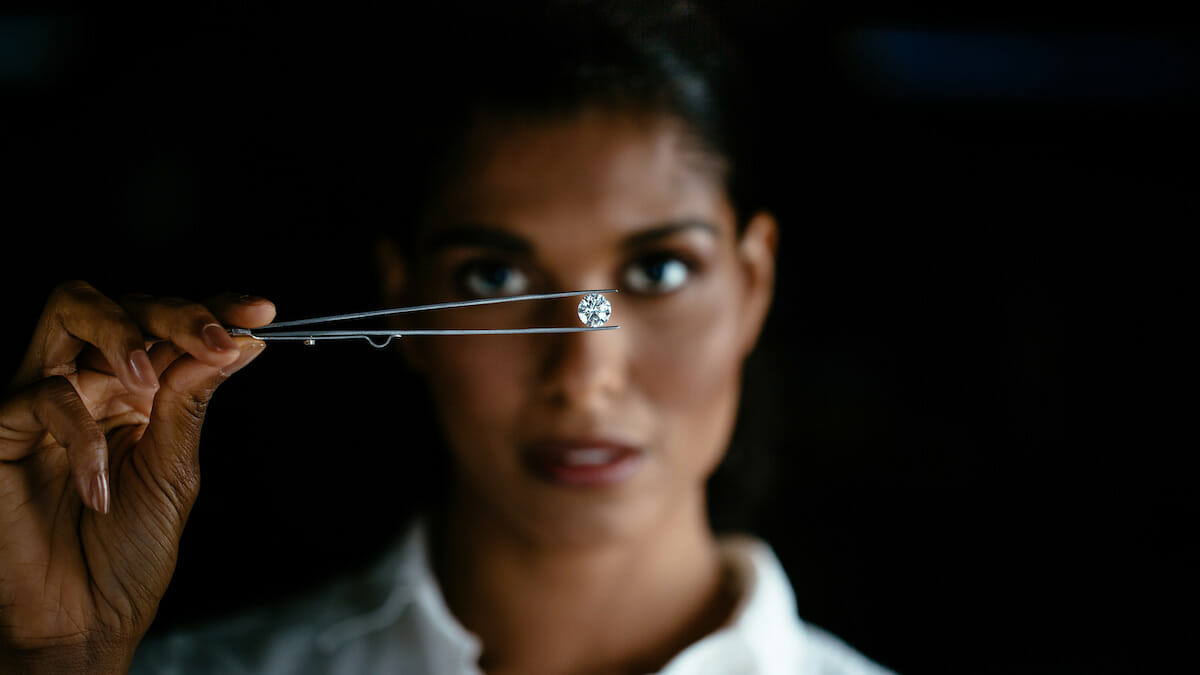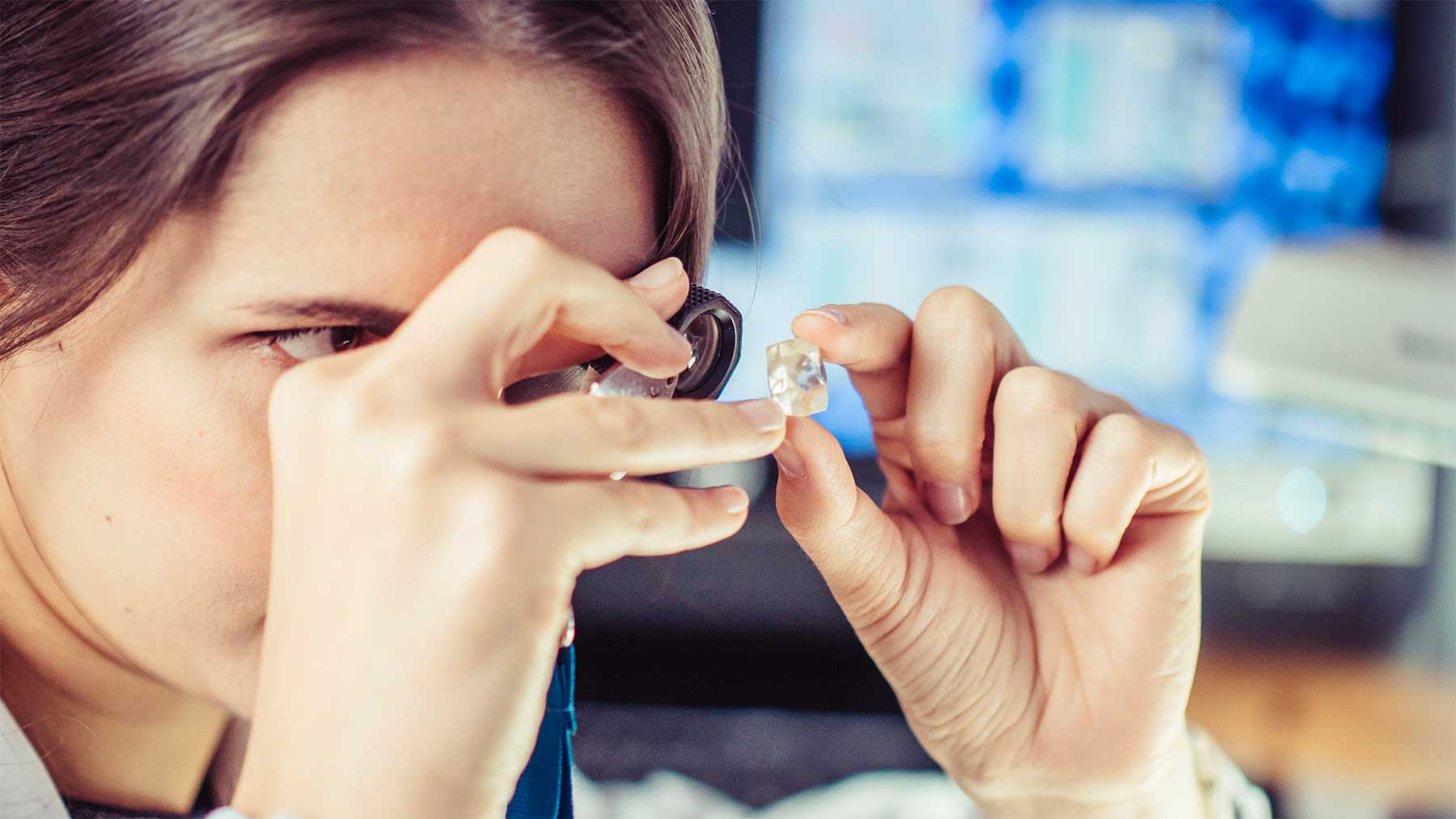Le diamant
Répondre aux mythes et aux idées reçues sur l’industrie du diamant
Pour lutter contre les préjugés et les idées préconçues sur l’industrie du diamant, le Natural Diamond Council a mené une étude pour mieux comprendre les questions que se posent les consommateurs sur l’industrie du diamant et pour leur apporter des réponses claires. Vous pouvez également lire le rapport complet de cette étude ici.
CONSTAT #1
Peut-on distinguer un diamant synthétique d’un diamant naturel ?
Oui ! Parce qu’ils sont produits en masse en quelques semaines, les diamants synthétiques présentent des caractéristiques et des inclusions spécifiques liées à une croissance rapide dans un environnement artificiel, qui peuvent être détectées à l’aide d’instruments de vérification professionnels.
CONSTAT #2
Comment puis-je savoir si mon diamant provient d’une source éthique ?
Dans le cadre du processus de Kimberley, mandaté par les Nations unies et l’Organisation Mondiale du Commerce, le commerce des diamants bruts est strictement réglementé afin de garantir l’absence de conflits. D’autres initiatives, telles que le Responsible Jewellery Council (RJC), première organisation mondiale de normalisation en matière de développement durable pour l’industrie de la joaillerie et de l’horlogerie, contribuent à garantir, par le biais de certifications vérifiées par des tiers, que les diamants naturels proviennent d’une source d’approvisionnement responsable.
CONSTAT #3
Les diamants synthétiques sont-ils tous durables ?
Le processus de fabrication des diamants synthétiques consomme énormément d’électricité car il nécessite la génération de températures similaires à 20 % de la température de la surface du soleil. La majeure partie de la production des diamants synthétiques ayant lieu en Chine et en Inde, où la majorité de l’électricité du réseau est produite à partir du charbon, il n’est pas possible de revendiquer un quelconque engagement écologique.
CONSTAT #4
Quelle a été l’évolution du prix des diamants synthétiques ?
En 2016, un diamant synthétique de 1,5 carat coûtait 10 600 dollars ; début 2023, il ne coûtait plus que 2 445 dollars. Bien qu’ils aient également fluctué au cours des 25 dernières années, les diamants naturels ont vu leur prix s’apprécier d’environ 3 % en moyenne chaque année.
ENTRE 2016 ET 2022, DANS LA PLUPART DES CAS, LE PRIX D’UN DIAMANT SYNTHETIQUE DE 1,5 CARAT A DIMINUÉ DE PLUS DE 75 %.
CONSTAT #5
Les diamants naturels sont-ils rares ?
Oui ! La production mondiale de diamants naturels a atteint son apogée en 2005 et a diminué de plus de 30 % au cours des 16 dernières années. La récupération annuelle de diamants d’1 carat équivaut, en volume, au remplissage d’un ballon de Pilates. La formation des diamants naturels s’étale sur des millions, voire des milliards d’années, dans des zones restreintes de la Terre. La formation des diamants naturels s’étale sur des millions, voire des milliards d’années, dans des zones restreintes de la Terre
CONSTAT #6
Que fait l’industrie du diamant naturel pour réduire son empreinte carbone et protéger la biodiversité ?
L’industrie du diamant naturel s’est engagée sur la voie de la décarbonisation, conformément des objectifs climatiques mondiaux. Des entreprises comme le groupe De Beers se sont engagées à devenir neutres en carbone d’ici à 2030 et Rio Tinto à atteindre des émissions nettes nulles d’ici à 2050. En outre, l’industrie du diamant protège efficacement la biodiversité de zones quatre fois plus grandes que les terres qu’elle utilise.
CONSTAT #7
Les diamants naturels profitent-ils aux pays dont ils proviennent ?
Jusqu’à 80 % de la valeur des diamants bruts peuvent rester dans les communautés locales sous la forme d’achats locaux, d’emplois, de programmes sociaux, d’investissements dans les infrastructures ainsi que d’impôts, de redevances et de dividendes versés par l’industrie aux gouvernements respectifs.

CONSTAT #8
Comment puis-je savoir si j’achète un diamant naturel ou un diamant synthétique ?
Toute entreprise qui vend des diamants synthétiques, comme les détaillants ou les bijoutiers, est légalement tenue d’indiquer qu’il s’agit d’un diamant fabriqué par l’homme et doit utiliser une terminologie adéquate lorsqu’elle communique avec ses clients.
CONSTAT #9
L’industrie fait-elle des réserves de diamants pour faire monter les prix ?
Non. Sur la base de données provenant de rapports d’entreprises et du processus de certification de Kimberley qui régit le commerce des diamants bruts, Bain & Company a indiqué que les stocks dans le monde ont diminué de 40 % en 2021.


CONSTAT #10
Quelles sont les conditions de travail dans l’industrie du diamant ?
Les membres du Natural Diamond Council veillent à ce que les conditions de travail dans leurs activités minières soient conformes aux normes internationales les plus strictes. En outre, 99,7 % des employés des membres du NDC sont embauchés localement et un tiers des employés de l’industrie minière du diamant naturel sont des femmes.
CONSTAT #11
Peut-on évaluer la traçabilité d’un diamant naturel ?
L’industrie du diamant naturel accélère ses initiatives en matière de traçabilité et tire parti de technologies telles que la blockchain pour apporter une totale transparence à ses chaînes d’approvisionnement.
